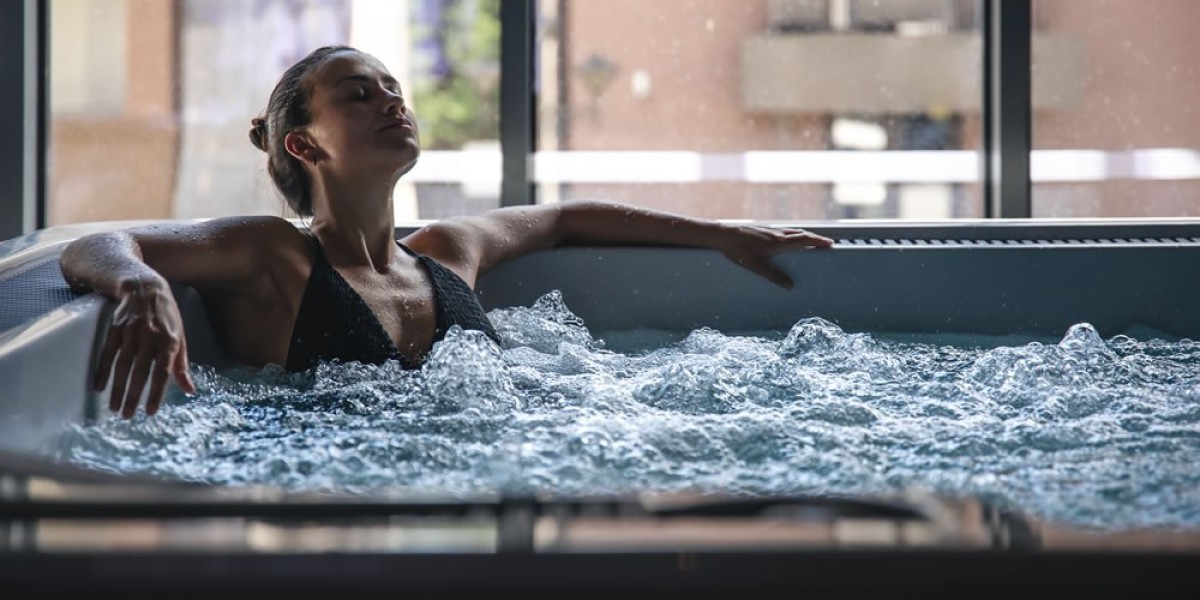What to Consider When Buying a Hot Tub
Before you start browsing hot tubs for sale, there are several key factors to consider to ensure you find the perfect fit for your lifestyle and space.
1. Size and Capacity
The size of the hot tub is one of the most important factors. Hot tubs come in various sizes, from small, 2-person models to large 8-person models. Consider the following:
- How many people will use it regularly? If it’s just for you or you and a partner, a smaller 2-4 person hot tub might be enough. For families or those who plan to entertain guests, you may want to opt for a larger model.
- Available space: Measure the space where you plan to install the hot tub, whether it's indoors or outdoors. Ensure there's enough room for the tub and adequate clearance for maintenance.
2. Type of Hot Tub
Hot tubs come in several types, each with its own features and benefits. Some of the most common types include:
- Portable Hot Tubs: These are the most common and versatile option. Portable hot tubs can be placed on patios, decks, or inside the house and are typically inflatable or hard-shell units.
- In-Ground Hot Tubs: These are custom-built and installed directly into the ground. They offer a more permanent option, often with a built-in look that blends seamlessly into your backyard.
- Swim Spas: If you're looking for a combination of hot tub and swimming pool, a swim spa is a great option. Swim spas have a larger footprint and are designed for swimming against a current, with built-in hot tub features as well.
3. Jet Features and Hydrotherapy
The number and type of jets play a crucial role in your hot tub’s comfort and effectiveness. Some features to consider include:
- Adjustable Jets: If you want a customized massage experience, look for a hot tub with adjustable jets. These allow you to target specific areas of your body, such as your back, shoulders, or legs.
- Hydromassage: High-quality hot tubs offer hydromassage capabilities, where jets combine with water pressure to provide therapeutic benefits like muscle relaxation, joint pain relief, and stress reduction.
4. Energy Efficiency
Energy efficiency is crucial to minimize ongoing operational costs. Hot tubs can use a lot of electricity to heat water, especially if they’re used frequently. Here’s what to look for:
- Insulation: Good insulation helps the hot tub retain heat, which reduces the amount of energy required to maintain the temperature. Look for models with foam insulation or thermal blankets to keep the water warm while reducing heating costs.
- Energy-Efficient Pumps and Heaters: Some models come with energy-efficient pumps and heaters, which can help cut down on energy usage without sacrificing performance.
5. Additional Features
Many modern hot tubs come with a variety of features designed to enhance your experience. Consider the following:
- LED Lighting: Color-changing LED lights can set the mood and create a relaxing atmosphere in your hot tub.
- Bluetooth Audio Systems: Some hot tubs come with built-in speakers, so you can listen to your favorite music while relaxing in the water.
- Waterfall Features: Waterfalls can add a tranquil, calming element to your hot tub experience with their soothing sound and visual appeal.
- Aromatherapy: Some hot tubs offer aromatherapy features, where essential oils can be diffused into the water for added relaxation.
6. Budget
Hot tubs can range widely in price, depending on the brand, size, and features. Here’s a general idea of what to expect:
- Budget-friendly options: Typically between $2,000 and $5,000. These are basic models with fewer features and a smaller size.
- Mid-range options: Between $5,000 and $10,000. These offer better features, such as more jets, better insulation, and extra accessories.
- Luxury models: $10,000 and up. High-end hot tubs come with premium features like advanced jet systems, powerful pumps, custom designs, and top-quality materials.
Where to Find Hot Tubs for Sale
There are several places where you can find hot tubs for sale. Depending on your budget and preferences, you can shop at:
1. Local Dealers
Buying from a local dealer is a great option if you want to see the hot tubs in person, test the jets, and ask questions about the product. Local dealers often provide delivery, installation, and maintenance services, which can be very convenient.
- Pros: Personalized service, local delivery and installation, often offers warranties and maintenance packages.
- Cons: Prices may be higher than online retailers due to additional overhead costs.
2. Online Retailers
Shopping online gives you the convenience of browsing multiple models and comparing prices from the comfort of your home. Popular online retailers for hot tubs include:
Amazon
Wayfair
Hot Tub Superstore
Spa Depot
Pros: Convenient, wide selection, often lower prices, and the ability to read customer reviews.
Cons: Can't test the product in person, may require you to arrange for delivery and installation separately.
3. Big-Box Stores
Stores like Home Depot, Costco, and Walmart also sell hot tubs, particularly portable and inflatable models. These options are often more affordable and may be available for quick pick-up.
- Pros: Affordable pricing, in-store pickup options, possible discounts or bundle deals.
- Cons: Limited selection of high-end models, minimal customization options.
4. Used Hot Tubs
If you’re on a budget, you might also consider buying a used hot tub. Many people sell their old hot tubs through classified ads, Craigslist, or Facebook Marketplace. Be sure to check the hot tub thoroughly for any wear and tear, especially the plumbing and jets.
- Pros: Significant cost savings.
- Cons: No warranties, potential for hidden issues, may require repairs.
Installation and Maintenance Considerations
Once you’ve found the perfect hot tub, you’ll need to think about installation and ongoing maintenance:
Installation
Hot tubs typically require an electrical hookup, so you’ll need a licensed electrician to install a dedicated outlet. If you're purchasing a large, in-ground, or custom hot tub, you may also need a contractor for excavation and installation.
Maintenance
Routine maintenance is crucial to keep your hot tub running smoothly. This includes:
- Cleaning the filters regularly and replacing them when needed.
- Balancing the water chemistry with pH, alkalinity, and sanitizer levels.
- Draining and refilling the water every 3 to 4 months to keep the water fresh and clean.
- Winterizing your hot tub if you live in a cold climate to prevent damage from freezing temperatures.
Conclusion
Whether you’re looking for a budget-friendly option or a luxurious spa experience, there’s a hot tub out there that fits your needs. By considering factors like size, type, energy efficiency, and budget, you can find the perfect hot tub to suit your lifestyle. With many hot tubs for sale at various price points, you’ll have no trouble finding one that fits your space and relaxation goals. Happy soaking!







